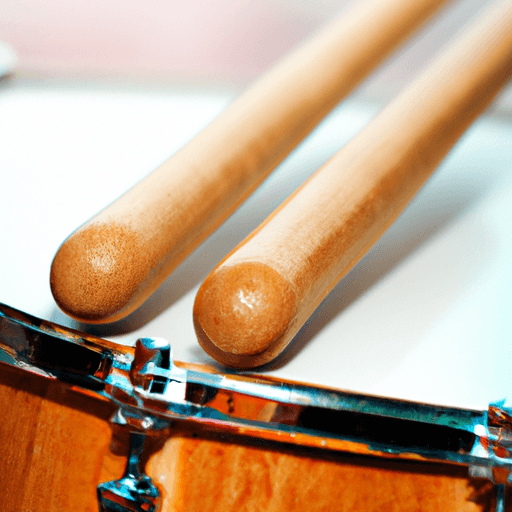| Complexity level: | 5 |
| Project cost ($): | 40 |
| Time required: | Preparation should take 1 day, and the experiment itself will take 1 day. |
| Material availability: | The materials required for this experiment can be easily obtained at a music school |
| Safety concerns: | None |
Hypothesis
The drumsticks that are made from oak and hickory will produce higher rebounds as compared to those that are made from titanium and aluminium.
Overview
The rebound behaviour of a drumstick is influenced by the type of wood that is used to make it. It is also determined by its length, thickness, tip shape, taper and shoulder location. A drumstick that gives good rebounds have the correct balance, a proper response, and give the drummer a ‘right feel’.
The shaft thickness of a drumstick affects both its height and weight. Thicker and heavier drumsticks are more durable and produce deeper sounds. Thinner and lighter sticks are easier to use and suitable for fast play. Drummers should choice their drumsticks according to the type of music they wish to play.
A longer tapered stick provides faster response and flexibility while a shorter tapered stick is stronger and stiffer. The shape of the tip is important for the type of sound produced. The length of the stick influences the type of ‘feel’ and ‘reach’ the drummer has.
The material the drumstick is made from determines its response and durability.
Commonly, drumsticks are made from maple, oak and hickory. They can also be made from fiber and metal.
Scientific Terms
Materials
The materials required for the experiment are as follows:
- A pair of titanium drumsticks (17 inches long, 0.625 inches in diameter)
- A pair of aluminum drumsticks (17 inches long, 0.625 inches diameter)
- A pair of hickory drumsticks (17 inches long, 0.625inches in diameter)
- A pair of oak drumsticks (17 inches long, 0.625 inches in diameter)
- A video camera
- A piece of graph paper
- A snare drum that is accompanied by a stand
- A pulley that comes with a string
- A stand to support the drumsticks
- A weight that weighs 1 kilogramme
Procedure
- The make of the drumstick (titanium, aluminum, hickory and oak) constitutes the independent variable. The rebound height of each drumstick makes up the dependent variable. This will be measured using the video camera. Measurements should be plotted on graph paper. The constants (control variables) are the snare drum, the dimension (length and diameter) of the drumstick and the weight used.
- Set up the experiment in line with what is shown in figure 1. The video camera, drumstick and graph paper are to be arranged in a straight line to measure the rebound height.

- The drumstick must be allowed to rotate freely when it is mounted on the stand. When the weight is released from the pulley end, the pulley will pull up the rear of the drumstick. This will cause the drumstick to hit the snare drum with a force. The amount of force exerted is influenced by the weight used at the pulley end.
- The video camera will record the rebound reaction of the drumstick the moment it hits the snare drum. The graph paper will be used to estimate the height of the rebound. If required, adjust the position of the camera, the drumstick and the graph paper may be required before conducting the experiment.
- Repeat the experiment 5 times, for each of the 4 different types of drumsticks. The average rebound height is to be calculated for each type of drumstick. Record these in the table below.

Results
The results show that the wooden drumsticks made from hickory and oak have a higher rebound than those made from titanium and aluminum.
| Make of drumstick | Titanium | Aluminum | Hickory | Oak |
| Rebound height (mm) | 21 | 18 | 27 | 24 |
Use below graph to plot the results of your observation.

Conclusion
The hypothesis that the wooden drumsticks will produce higher rebounds has proven to be true.
In the past, drumsticks were differentiated according to how they were used in orchestra, band and street marching. However, this differentation has faded away because of the wide variety of drumsticks available today. A particular type of drumstick may produce a particular sound. However, drumsticks made from wood are still preferred because they can be used to produce many types of sound. Those made from fiber or metal are more durable. However, they tend to produce more shock/vibration and hence are a slightly more strenuos on the drummer's wrists.
Also consider
One can alter this experiment by using weights of different weights, different types of drums, and drumsticks that are made of different thickness.
References
How to pick a perfect pair of drumsticks? - http://www.vicfirth.com/product/how-to-pick-your-sticks.html
Snare drum - http://en.wikipedia.org/wiki/Snare_drum
How to play snare drum? - http://www.ehow.com/how_4889078_play-snare-drum.html

